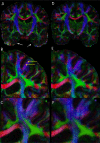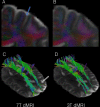Clinical 7 T MRI: Are we there yet? A review about magnetic resonance imaging at ultra-high field
- PMID: 30359093
- PMCID: PMC6404849
- DOI: 10.1259/bjr.20180492
Clinical 7 T MRI: Are we there yet? A review about magnetic resonance imaging at ultra-high field
Abstract
In recent years, ultra-high field MRI (7 T and above) has received more interest for clinical imaging. Indeed, a number of studies have shown the benefits from the application of this powerful tool not only for research purposes, but also in realms of improved diagnostics and patient management. The increased signal-to-noise ratio and higher spatial resolution compared with conventional and high-field clinical scanners allow imaging of small anatomical detail and subtle pathological findings. Furthermore, greater spectral resolution achieved at ultra-high field allows the resolution of metabolites for MR spectroscopic imaging. All these advantages have a significant impact on many neurological diseases, including multiple sclerosis, cerebrovascular disease, brain tumors, epilepsy and neurodegenerative diseases, in part because the pathology can be subtle and lesions small in these diseases, therefore having higher signal and resolution will help lesion detection. In this review, we discuss the main clinical neurological applications and some technical challenges which remain with ultra-high field MRI.
Figures








References
-
- US Food and Drug Administration (FDA) Criteria for significant risk investigations of magnetic resonance diagnostic devices. 2014. Available from: https://www.fda.gov/RegulatoryInformation/Guidances/ucm072686.htm [October 2018].

